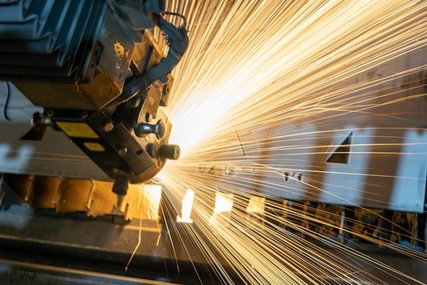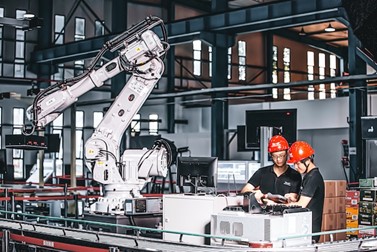Joe Hinkle of Michigan has over 30 years of experience in manufacturing. In the following article, Joseph Hinkle discusses how technology and digitization has transformed the manufacturing industry.
The digital age is something that came quickly and is evidently here to stay. Almost every industry is boasting their advancements in this new age, and manufacturing is just one of them. That said, it can be overwhelming to try to understand how an industry that is so fundamentally physical can be digitized.
According to industry experts, the business sector of manufacturing is updating their normal operations to solve manufacturing problems with digital solutions. These lead to great benefits in manufacturing, such as lower supply costs, higher efficiency, greater productivity, and ultimately, a greater focus on the needs of the customer.
In this article, Joe Hinkle of Michigan examines the digital transformation of manufacturing through the benefits that arise from the changes in this field. By the conclusion, it should be clear that not only is manufacturing speeding into the digital age, but it is doing so to the advantage of manufacturers and their customers overall.
Joe Hinkle Explains the Benefits of Digital Manufacturing
Although digitization has its uses and benefits, there are many throughout every business sector that would prefer to stick with the status quo. It can be difficult to embrace change, especially thanks to the pre-conceived notion that digitization lowers job opportunities.
However, in the case of the manufacturing sector, a digital transformation is nothing less than a great thing! One of the best ways to understand this transformation is to review the benefits of what this process entails, and how it not only makes manufacturing more efficient, but heightens productivity and creates opportunities.
A More Efficient Process
Operations that have been part and parcel in the business of manufacturing are now automated, by and large. The way manufacturers get their work done has grown in leaps and bounds in terms of efficiency because of insights provided by the digital assets, such as internal workflow and even AI-analyzed data.
Solid Decisions
Joseph Hinkle of Michigan states that the decision-making process in any business can make or break that sector. The best way to make the best decisions is to understand all the facts. Digitization, especially data handling, analytics, and AI like the ones used in eCommerce allow manufacturers to cover all their bases before making important choices.
Heightened Production
Because data is being analyzed and gathered more accurately through the digital transformation, decisions are being made more wisely. The bottom line reflects this; manufacturers are using more innovative technical solutions and using their space and resources to produce more.
Low Cost
When production is up, workflows are highly efficient, and decisions are being made to benefit the manufacturers, their costs are lowered. This is because of a combination of facts that all stem from digital transformations. There are increased savings on the cost of labor, and so is the expense of any unnecessary or even wasteful material and space.
Effective Control
Monitoring based on real-time data collection and analyzation, as well as maintenance solutions that are more advanced than the pre-digital age would’ve been, leads to greater control on every level of the manufacturing sector.

Product Quality Growth
Joseph Hinkle of Michigan explains that when the process of manufacturing is enhanced by the above-mentioned great decision making based on real data, and the labor is efficient and automated, the products themselves are better in quality. Bonding, assembly, and other elements of the job are done with excellence.
Greater Safety
Ensuring safety in manufacturing is paramount for any business, as it involves safeguarding both employees and customers throughout the production and consumption process. By introducing automation and data-driven decision-making into operations, businesses can effectively mitigate risks and reduce the associated costs of accidents.
When tasks traditionally performed by humans are taken over by automated systems, the potential for human error is minimized. Additionally, relying on data-driven insights enables businesses to make informed decisions that prioritize safety and optimize processes. This combination of automation and data-driven decision-making fosters a safer working environment, leading to enhanced protection for employees and customers alike.
Customer-Centered
Joseph Hinkle of Michigan notes that software solutions have become more advanced, which leads to a greater ability to monitor what customers need and stick to their specific order more carefully and consistently. This leads to establishing trust with each customer for the business as a whole.
In Conclusion
Joe Hinkle of Michigan reports that the digital transformation of manufacturing may be an unlooked-for change for many in this particular business sector. However, it is a good change no matter how it is looked at. Whether examining the greater attention to the customer, the higher quality of product, or the safety and control offered to manufacturers, digital transformation is beneficial!









